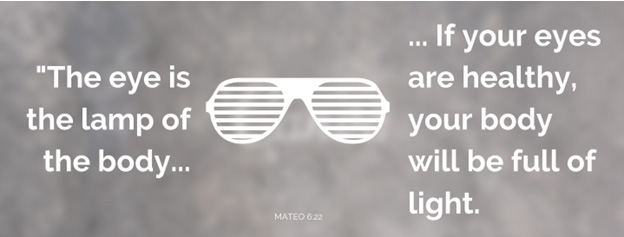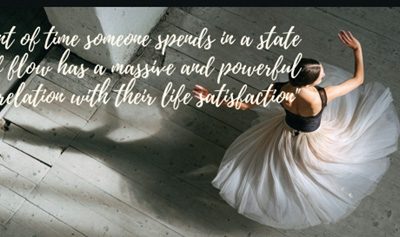“With What Do We See? With the Eyes, or with the Brain?”
Since we were children, our mothers have insisted on us eating tomatoes and carrots for healthy eyes and vision.

And it’s that visual health has accompanied us since we were children, with occasional visits to the ophthalmologist, optometry days at school, and when it comes to company health weeks, a good eye exam has always been present.
Perhaps we are clear that visual health is a fundamental part of our overall health, but how much do we really know about this topic? Have we delved deep enough into habits that truly lead us to optimal visual health? Speaking with Dr. Ariadna Silva Lepe, a Mexican neuro-ophthalmologist trained in the USA, she mentioned that the first thing to ask ourselves is whether we see with our eyes or with our brain. Dr. Andrew Huberman, a neuroscientist and professor at Stanford University, says that the eyes are part of the brain, and a fundamental part of our brain health. Taking this into account, we may begin to change our perspective towards the importance of visual health, which should be seen as a priority in any health scheme or plan, whether individual, familial, collective, or corporate.
Visual health should go beyond simply getting an eye exam to see how well we see, if we need glasses, or if we have any conditions such as cataracts or macular degeneration (which typically come with age), among other conditions. Visual health should start with lifestyle habits that help us take care of that part of the brain and prevent diseases later on.
Nutrition and supplementation play a fundamental role, as our mothers and grandmothers were right in insisting that we eat red and orange vegetables. Vitamin A (if in supplement form, it should be beta-carotene, as synthetic vitamin A supplementation – excess retinol – can be toxic), vitamin C, omega-3, lutein, zeaxanthin, etc. are key nutrients (micronutrients and phytonutrients) as antioxidants and nourishment for the eye cells. In short, eating for sight, or as Dr. Silva-Lepe says, having a healthy nutrition for vision is crucial as a habits program for optimal and sustainable visual health.
In addition to nutrition, rest, and restful sleep are also factors of a healthy lifestyle that contribute to visual health, considering that it is also a virtuous circle, that is, taking care of our eyes, and showing them light when we start the day and darkness when we want to rest and sleep, helps our circadian rhythms, the production of hormones that help us fall asleep, or activate that circadian alert system and help us wake up with full vigor and energy, to be a daily reality in our lives.
Walking early in the morning not only allows sunlight (even on a cloudy day) to reach our skin, helping with the production of vitamin D, but that light that penetrates through our eyes is key for our body to regulate that biological clock that allows optimization in the production of hormones, enzymes, etc., which calibrates circadian rhythms. This leads us to sleep better, rest, have more energy during the day, and better utilize the nutrients we give our bodies. And it all starts with what our eyes receive. (To delve deeper into this, you can take a look at the sleep management workshop for companies, helping our employees rest is of utmost importance)
And what about the use of screens in our daily lives? We must take care of the light that enters our eyes (especially at night), which is why glasses that reduce the entry of blue light from screens into our eyes are recommended. But excessive screen use during the day and much of the night makes it even more relevant for us to do exercises with our eyes. Active breaks that help our eyes and the involved muscles exercise, rest, see depth, etc. Active breaks, midday walks during the workday greatly help visual health, and also mental health.
Visual health is a topic that today is so important that we must start by implementing holistic visual health programs for employees in companies.
Blogs
World Sleep Day
World Sleep Day: To Save Everything from Marriages to High-Performance TeamsAnother day we give a name to, to remind ourselves of something that should be remembered every day: the importance of sleep and rest in our routines. There's much to discuss about sleep, but...
What pace are you keeping up with: the company’s pace, or your family’s pace?
What pace are you keeping up with: the company's pace, or your family's pace? I attended a leadership conference where the topic of the leader´s pace was discussed. In an increasingly fast-paced world, we've bought into the idea that the faster we run, the more...
Self-care, far from being a selfish act…
Self-care, far from being a selfish act...We have been talking about exhaustion, stress, the importance of sleep, and previously about nutrition and movement... all pillars of well-being.We have concluded that without habits that directly impact these pillars, it is...
Mastering the Art of Taking a Nap!
Mastering the Art of Taking a Nap!Have you ever felt that absurd tiredness, where your eyes start to close around 2:30 in the afternoon (or maybe at 4:00 PM if you're in Mexico)?Do you feel exhausted and stressed because you have a lot of work to do? After lunch, it's...
Health + Mental Well-being = Flourishing!
Health + Mental Well-being = Flourishing!Health, is it the absence of illness? Mental health, could it be the absence of mental illnesses?The correct answer should be no! The World Health Organization defines health as follows: "a state of complete physical, mental,...
States of – “FLOW”
States of - "FLOW"Have you ever felt in a state of maximum productivity? A moment where everything flows, your ideas, your ability to concentrate, time flies by, and yet minutes pass and you don't even realize it.That's called the state of flow or FLOW, moments where...






